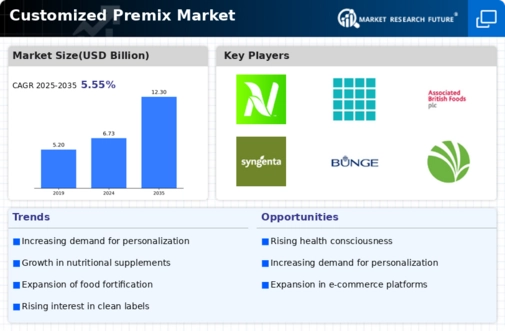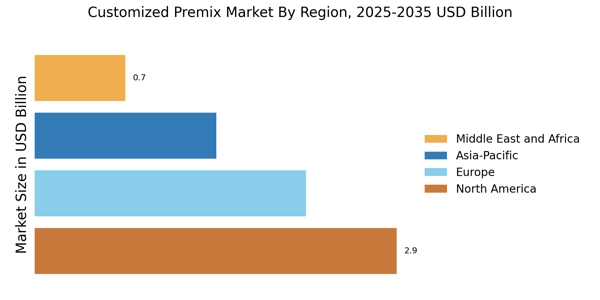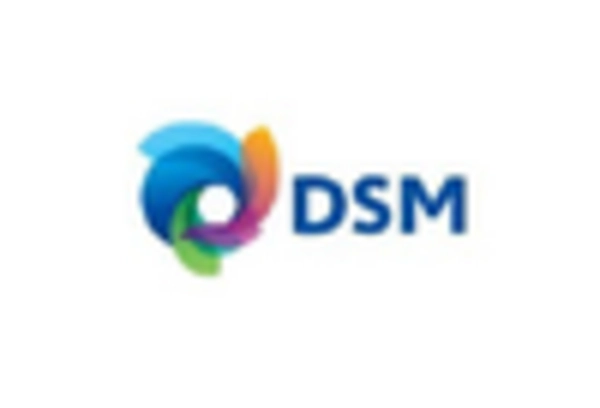Increasing Health Consciousness
The Customized Premix Market is experiencing a notable surge in demand driven by a growing awareness of health and wellness among consumers. Individuals are increasingly seeking tailored nutritional solutions that align with their specific dietary needs and health goals. This trend is reflected in the rising sales of customized premixes, which are designed to cater to various health conditions, such as obesity, diabetes, and cardiovascular diseases. According to recent data, the market for personalized nutrition is projected to reach substantial figures, indicating a robust growth trajectory. As consumers prioritize health, the Customized Premix Market is likely to expand, offering innovative products that meet the evolving preferences of health-conscious individuals.
Expansion of E-commerce Platforms
The Customized Premix Market is witnessing a transformative shift due to the rapid expansion of e-commerce platforms. Online retailing has become a preferred shopping method for many consumers, providing convenience and access to a wider range of customized premix products. This trend is particularly significant as consumers increasingly seek personalized nutrition solutions that can be conveniently ordered from the comfort of their homes. Data suggests that e-commerce sales in the food and beverage sector have seen remarkable growth, with a substantial portion attributed to health-oriented products. Consequently, the Customized Premix Market is likely to benefit from this digital transformation, as brands enhance their online presence and engage with consumers through targeted marketing strategies.
Innovations in Nutritional Science
The Customized Premix Market is benefiting from ongoing innovations in nutritional science, which are enabling the development of more effective and targeted premix formulations. Advances in research and technology allow for a deeper understanding of individual nutritional needs, leading to the creation of customized solutions that cater to specific health requirements. This scientific progress is reflected in the increasing availability of personalized premixes that address various dietary concerns, such as allergies and intolerances. As the industry embraces these innovations, it is likely to attract a broader consumer base, enhancing the appeal of customized premixes. The Customized Premix Market appears poised for growth as it leverages scientific advancements to deliver tailored nutritional products.
Rising Interest in Functional Foods
The Customized Premix Market is significantly influenced by the increasing interest in functional foods, which are perceived to offer health benefits beyond basic nutrition. Consumers are becoming more discerning, seeking products that not only satisfy hunger but also contribute to overall well-being. Customized premixes, which can be fortified with vitamins, minerals, and other beneficial ingredients, are well-positioned to meet this demand. Market data indicates that the functional food sector is expanding rapidly, with consumers willing to invest in products that promote health and prevent disease. This trend suggests that the Customized Premix Market will continue to thrive as it aligns with the growing consumer preference for foods that support a healthier lifestyle.
Growing Demand for Sustainable Ingredients
The Customized Premix Market is increasingly influenced by the growing demand for sustainable and ethically sourced ingredients. Consumers are becoming more environmentally conscious, seeking products that align with their values regarding sustainability and social responsibility. This shift is prompting manufacturers to explore eco-friendly sourcing options and develop customized premixes that utilize sustainable ingredients. Market trends indicate that consumers are willing to pay a premium for products that are perceived as environmentally friendly. As a result, the Customized Premix Market is likely to evolve, with brands focusing on transparency and sustainability in their ingredient sourcing practices, thereby appealing to a conscientious consumer base.


















Leave a Comment